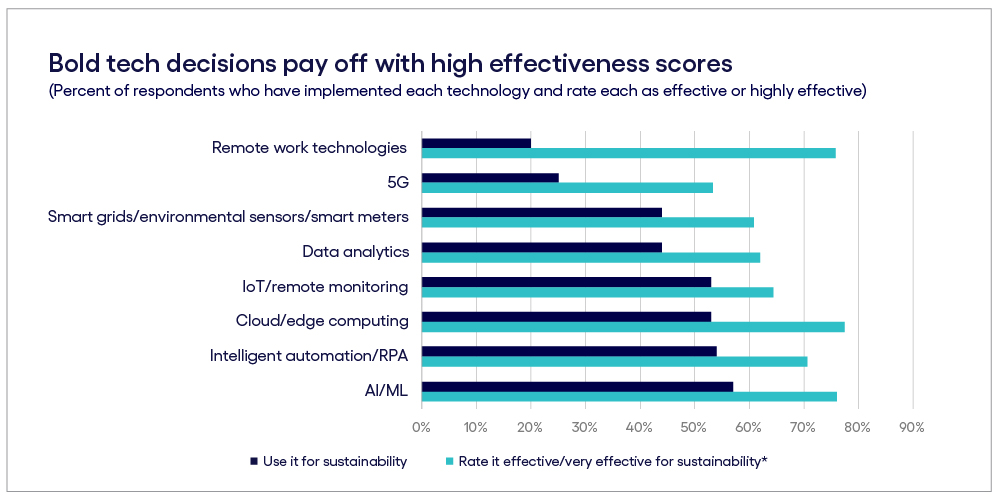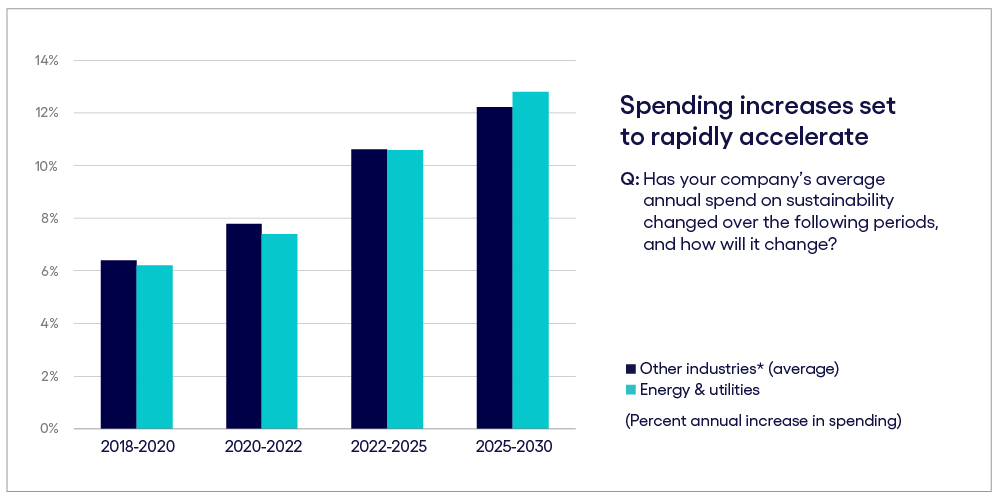February 14, 2024
How to build smart grids for the renewable energy transition
Grid modernization is essential for increased electrification and renewable energy use—but it also poses many challenges. Here’s how to overcome them.
With the burning of fossil-fuel accounting for over three-quarters of human-caused greenhouse gas (GHG) emissions globally, the world’s chances of meeting the Paris Agreement goals depend to a large extent on two key factors: the electrification of activities currently dependent on fossil fuels and a significant acceleration of the transition to renewable energy sources.
In support of clean-energy objectives, over 115 countries at the UN climate conference late last year agreed to triple renewable capacity and double energy efficiency by 2030.
But even if that ambitious but essential and achievable target is met, another challenge remains for achieving the dual goals of electrification and renewable transition: robust smart grids, which use sensors, artificial intelligence (AI) and a range of other digital technologies to minimize failures and boost energy efficiency.
To understand where businesses around the world stand in terms of their sustainability transition, we recently partnered with Oxford Economics to conduct a survey of 3,000 senior executives across industries (including 295 from the energy & utilities sector). (For the full study, see “Deep Green: how data, technology and collaboration will drive the next phase of sustainability in business.”)
A clear lesson learned is that grid modernization must be accelerated, which will require energy & utilities businesses to overcome three key challenges:
- Enabling the grid to support intermittent generation of renewable energy
- Supporting the prosumer movement
- Managing the costs of the energy transition
The relationship between renewable energy and smart grids
Electrification is essential to lowering the emissions of industries and businesses currently dependent on fossil fuels—prime examples being electric vehicles and heat pumps.
This means of all the energy consumed in the world, the share of electricity will rise from around 20% today to over 50% in 2050 if the world meets its target of net zero by then. According to Hitachi Energy, the world will require four times as much electricity generation and three times as much transmission capacity as it has today.
This isn’t just about more transmission lines. Digital technologies will also be needed to underpin electrical grids. For example, sensors and smart meters will need to generate data that can be processed on the edge (near the source) or on the cloud, with AI producing more accurate supply and demand forecasts.
With this in place, generators and grid operators could improve their planning and efficiency—hence reducing demand and, therefore, the associated GHG emissions.
Of course, electrification will only move the needle on GHG emissions if electricity is generated from clean sources. This means the share of electricity generated by fossil fuels must fall from the current 62% to practically zero by mid-century.
The good news is, while the growth in renewables over recent years needs to increase, the progress so far has been nothing short of remarkable. In mid-2023, according to the International Energy Agency (IEA), the world was on track to add a record 440 GW of renewable capacity by the end of the year, up from 336 GW in 2022—and a far cry from the 190 GW added in 2019.
The agency also projected, in its central scenario, an additional 463 GW in 2024, leading the world’s total renewable capacity to over 4,500 GW, the equivalent of the combined power capacity of the two largest national economies, the US and China.
Overcoming challenges of the clean energy transition
While the road to an economy powered by renewables and transmitted via smart grids is a promising one, it is also full of challenges. In the remainder of this article, we discuss the main difficulties and how to address them.
- Challenge: Enable the grid to support intermittent generation of renewable energy. Renewables are not only clean but are also, increasingly, the cheapest sources of energy in many geographies. Unfortunately, there’s a catch: Renewable generation is intermittent—you can’t generate solar energy when the sun doesn’t shine or wind energy when the wind doesn’t blow.
This poses a substantial problem because the grid’s frequency, which needs to remain steady (typically at 50 or 60 hertz), may become unbalanced if there’s a disparity between supply and demand. In other words, electricity supply must always match demand on the grid, and the intermittency of renewables makes this difficult.
- Recommendation: Build in tech-infused agility. The IEA calculates that digital technologies could minimize the impact of this variability by over 25% by 2030. AI, for example, can crunch vast amounts of data on demand forecasts, grid requirements and weather variation to establish the optimal combination of renewable energy and storage contribution as the source of electricity.
By identifying and helping operators manage peaks in supply and demand, AI solutions also lower operational costs. They can help operators combine the use of battery power with demand management systems. These systems can offer energy customers incentives to temporarily reduce their demand, helping keep the grid in balance.
Already, more than half (57%) of energy & utilities companies use AI in their sustainability efforts, and over three-quarters (75%) of those that do are convinced of the technology’s effectiveness (see Figure 1).
There are other important technologies, as well. For example, cloud boosts operators’ agility by allowing them to gather and process data, and quickly experiment with a variety of concepts and model new situations without spending time and resources on hardware procurement, installation and maintenance. The Internet of Things (IoT)—in essence, the placement of sensors across the grid to collect and transmit data—is at the heart of real-time insight generation. So far, 53% of E&U companies are using these technologies to improve their sustainability performance.
Laggards in tech adoption should take a page out of Duke Energy’s book. After many years using AI in tasks such as inspecting assets and critical infrastructure, the US utility has partnered with Amazon Web Services (AWS) to apply advanced computer vision to detect anomalies in wooden poles in the grid—a key step to increasing the resilience of its electricity transmission.
*Share of those that use the respective technology for sustainability
Base: 295 energy & utility executives
Source: Cognizant & Oxford Economics
Figure 1
- Challenge: Support the prosumer movement As the proliferation of rooftop solar panels attests, much of the explosion in renewables seen in recent years has been carried out by new business and households that have become prosumers—in other words, simultaneously producers and consumers.
This marks a drastic change in how electricity is distributed and consumed, from the time-honed unidirectional distribution network operator (DNO) model, to one of distribution system operators (DSO) that are responsible for distributing and managing electricity generated by multiple sources to its final consumers.
In this new world, each prosumer is a microgenerator, able to not just generate its own electricity, or some of it, but also export it to the grid when their production exceeds their needs. This adds substantial complexity for grid operators, which now have to ensure the grid remains in balance with a system in which electricity flows both ways.
- Recommendation: Strategize to harness micro-generation. In addition to using technology to address these challenges, operators need to understand the evolving needs and demands of their clients, who now expect payments for their exports to the grid to help amortize their initial investment in generation capacity. This calls for a new pricing mechanism, which leading companies are already adopting.
For example, UK-based Octopus Energy offers prosumers a differentiated tariff in which electrical costs that are both charged for and paid by the operator are substantially lower during non-peak hours and higher at peak demand times. This means prosumers can save by running programmable appliances (such as washing machines and dishwashers) and charging their batteries during off-peak times, together with self-generated electricity. By doing so, they can also diminish peak-hour demand and help balance the grid, even during overcast days.
The DSO model is not only essential for decarbonization; it also makes business sense for most operators. Those able to successfully incorporate multiple micro-generation points—or even entire mini-grids—into their grid can reduce the need to purchase or produce their own electricity, resulting in great cost savings.
In addition, the DSO model also makes the grid more resilient, since it reduces dependency on a handful of centralized generating units for electricity supply.
- Challenge: Managing the costs of the energy transition There’s no question that modern smart grids ready for a DSO world have multiple advantages for grid operators, their clients and society as a whole. But they don’t come cheap.
The Energy Transitions Commission, which brings together investors and companies from across the energy ecosystem, estimates that achieving a net-zero global economy by 2050 will require annual investments of USD $900 billion until mid-century to extend, upgrade and replace transmission and distribution networks. An additional USD $200 billion would be needed to improve grid flexibility, including battery and seasonal storage capacity, according to the commission.
In our survey, the average E&U company reported its intention to increase investment in sustainability by 12.8% per year between 2025 and 2030 (see Figure 2). This compares with a projected 12.3% annual rise for an average of the other nine industries included in our survey.
*Average of the following industries: transportation & logistics, banking & capital markets, telecommunications & technology, retail & consumer goods, food & agriculture, manufacturing & automotive, insurance, media & entertainment and life sciences.
Base: 2,950 senior executives with visibility over sustainability (295 per industry)
Source: Cognizant & Oxford Economics
Figure 2
- Recommendation: Be smart about investments. With the high interest rates prevalent today, preceded by two years of high inflation, there are limits to the ability of consumers—both businesses and households—to absorb the cost of the desperately needed new investment. As a result, grid operators have to be smart about their investments in two different but complementary ways.
First, they must explore all financing possibilities available to them. Second, they must put the modernization of their grids for a DSO system underpinned by renewable energy at the absolute center of their new investment. Succeeding with this transition will largely determine their viability as a business in the medium-term.
Throughout the world, governments offer a variety of incentives to help with grid modernization. The US government, for instance, has recently announced investment of over USD $30 billion to modernize the country’s grid infrastructure, while the European Commission has proposed an action plan to boost the modernization and interconnectedness of electricity grids in the bloc.
Financial markets also offer options. For example, as far back as 2017, Italian-headquartered Enel issued its first “green bond,” whose proceeds must be earmarked for sustainability purposes. The deployment of smart-grid technology was one of its objectives.
A good example of investment focus comes from Spain-headquartered, renewable-oriented Iberdrola. Its 2023-25 strategic plan includes €27 billion in grid modernization across four geographies: the US, Brazil, the UK and Spain.
Grid tech for a green world
The accelerated deployment of smart grids is vital to enabling the renewable energy transition. While the challenges are many, the solutions exist to meet them. The companies that succeed with this journey will secure their position at the forefront of the future-fit energy world.
Learn how your business (or you) can become sustainable to the core in our report, “Deep Green: How data, technology and collaboration will drive the next phase of sustainability in business.”
Latest posts
Related posts
Get actionable business Insights in your inbox
Sign up for the Cognizant newsletter to gain actionable AI advice and real-world business insights delivered to your inbox every month.





















